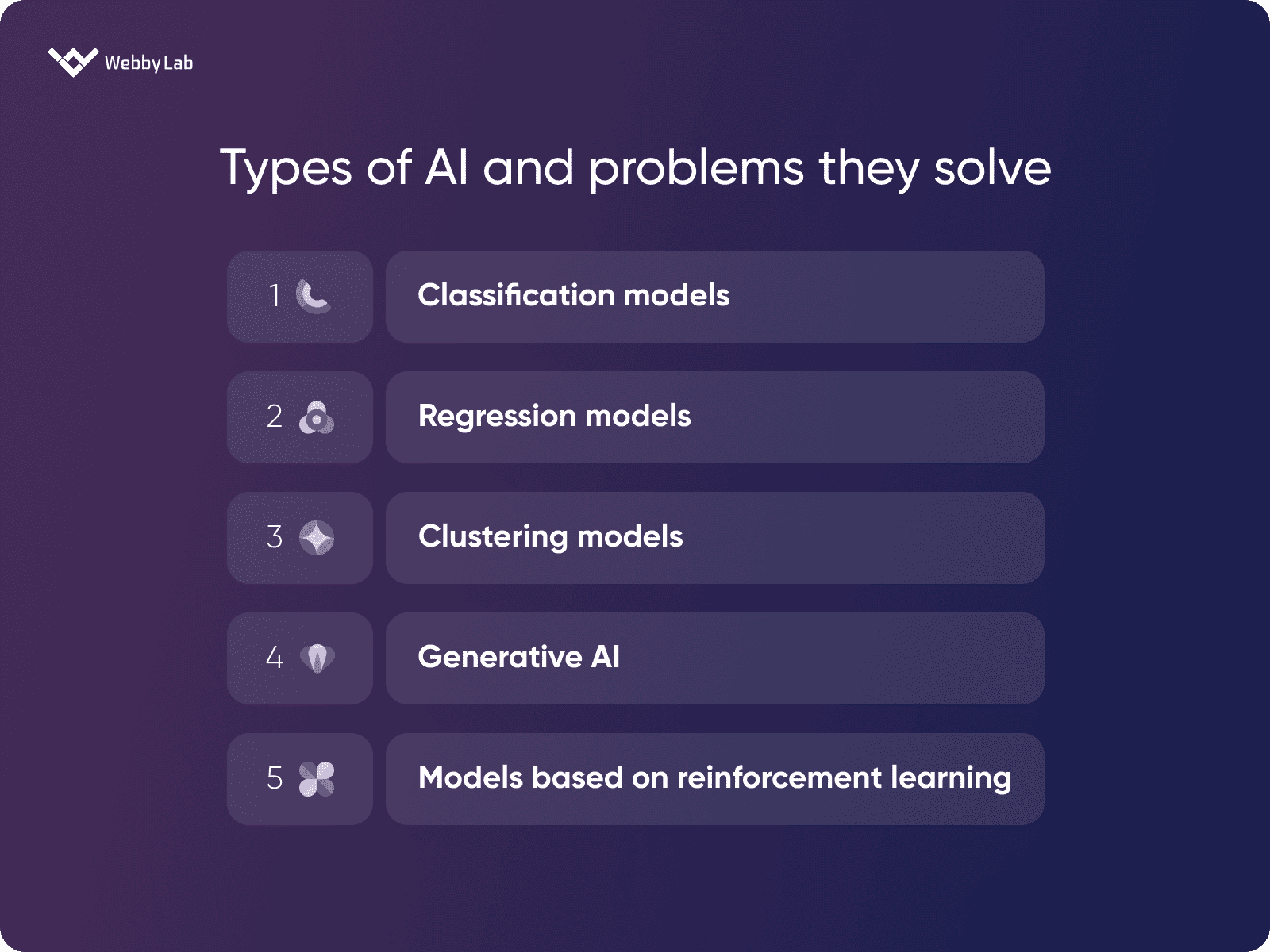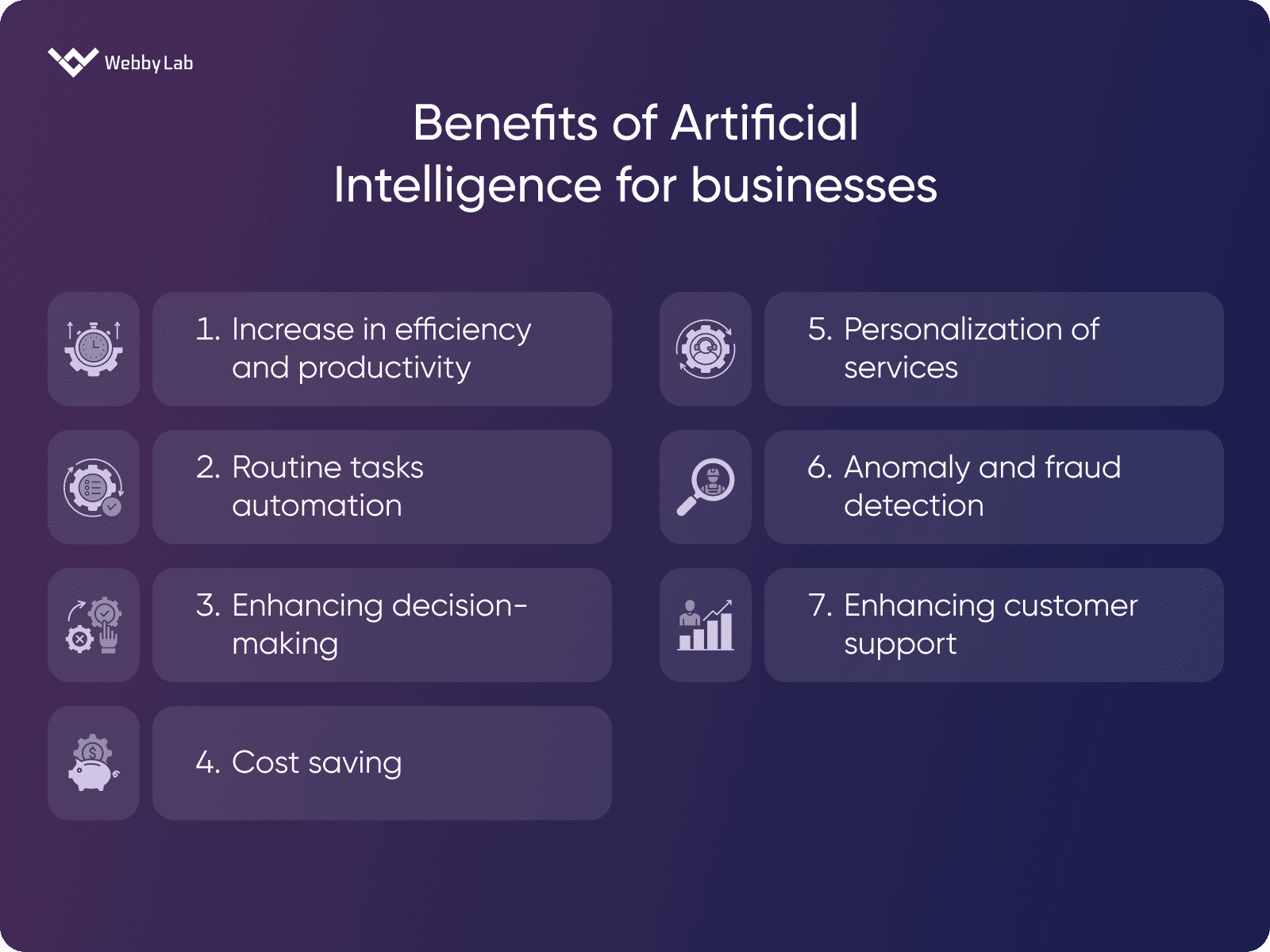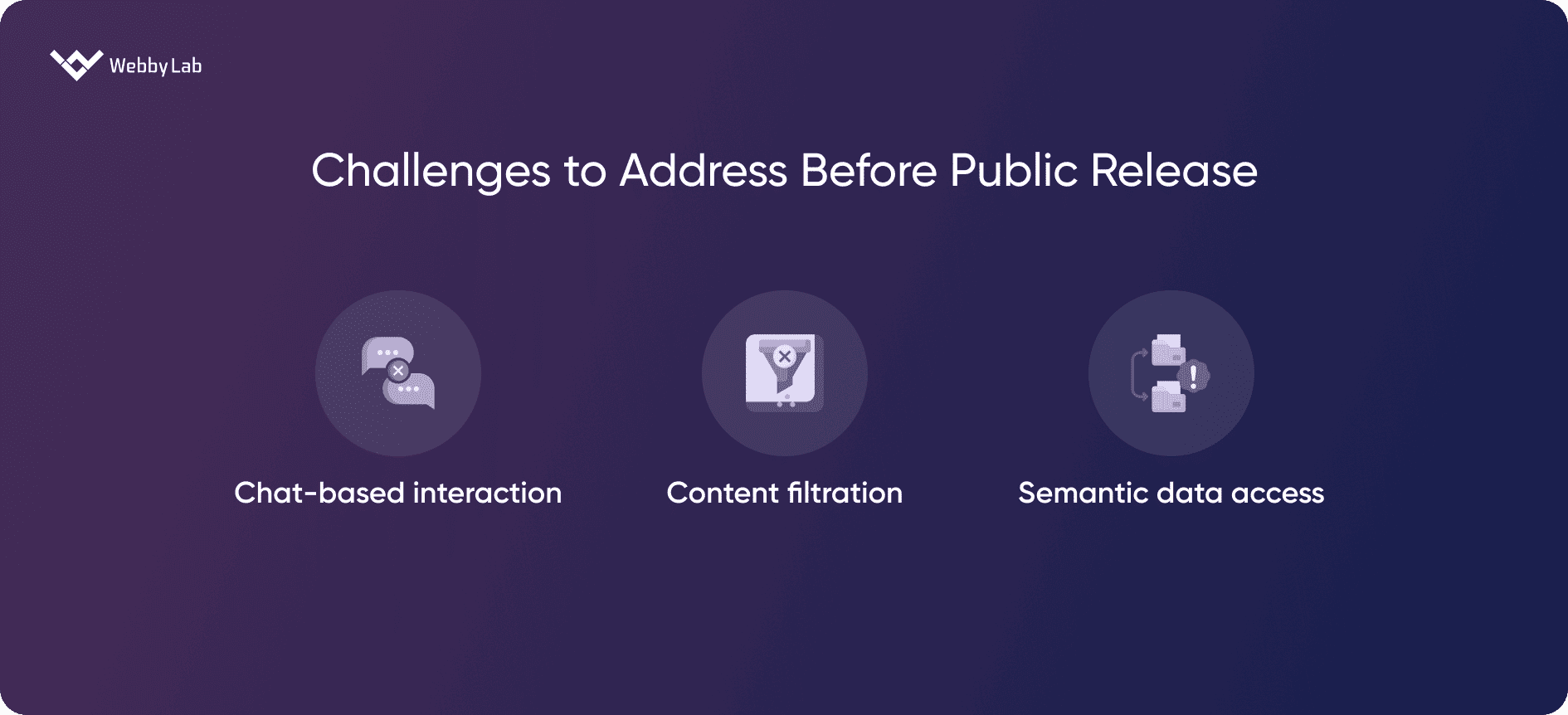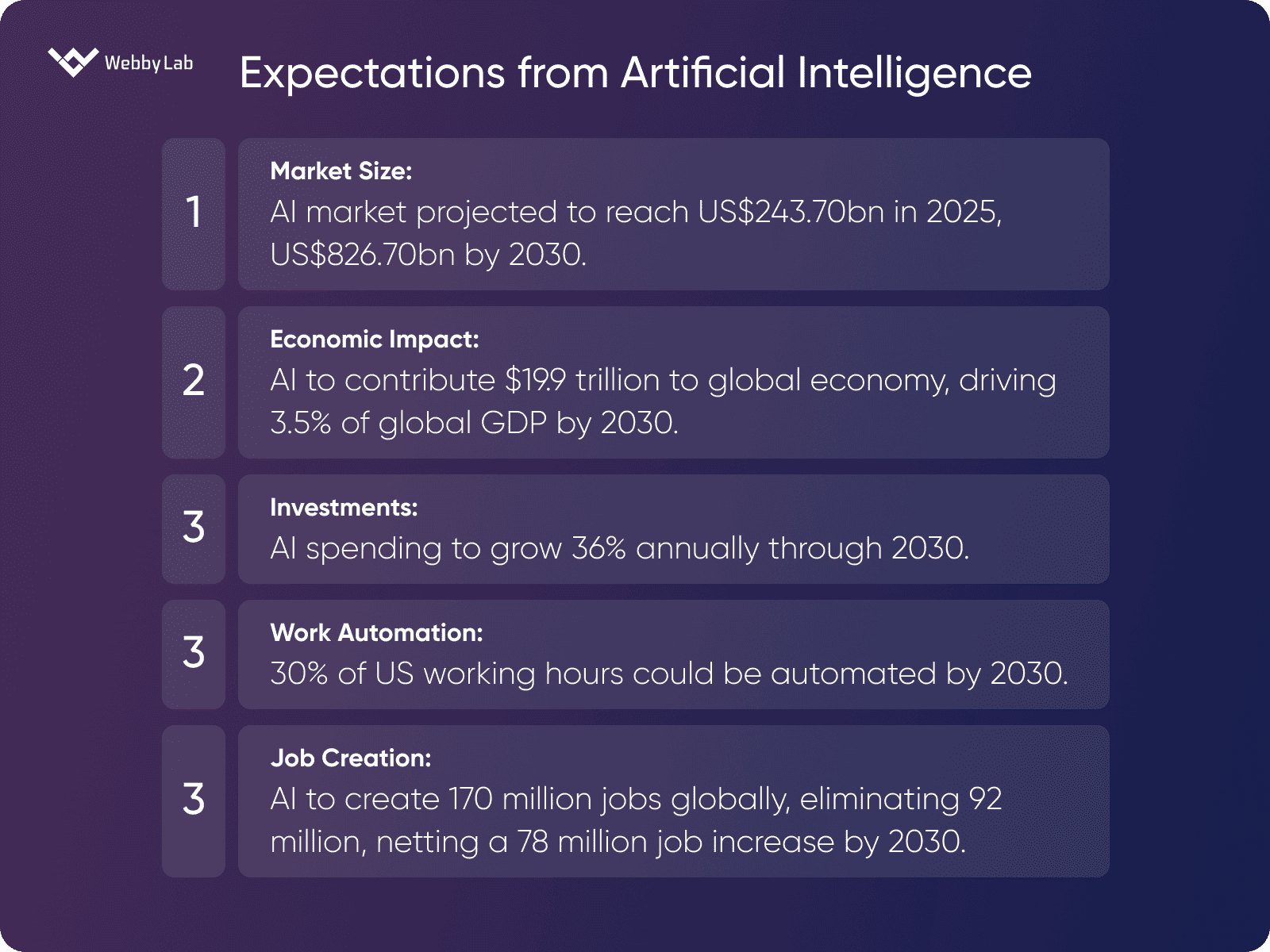7 Benefits of Artificial Intelligence (AI) for Business [+ Real Cases]
Written by:

Maksym Kotov
Node.js developer at Webbylab
Experienced Node.js developer passionate about crafting scalable backend solutions. Keen on JavaScript/TypeScript ecosystems, DevOps practices, and continuous learning.
Automation allows for significantly reducing the human effort for a subset of business processes. Working with information and making data-driven decisions becomes significantly easier with the usage of AI-driven technologies. For example, using AI, it is possible to significantly cut spending on technical or client support consultations.
The LLM could access facts queried by the client in the vector database and promptly respond with personalized, relevant information. Horizontal scaling of AI consultants is much more affordable than expanding human working hours and their respective budget.Though, as the current technology has limits, some human interventions might still be needed for special cases. Nonetheless, a combination of AI and human workers is a straightforward solution to cut costs and improve efficiency.
Small businesses can leverage existing technologies in numerous ways to improve their efficiency. Here are some examples:
1. Customer Service & Chatbots
1.1. AI-powered chatbots (e.g., ChatGPT, Drift, Intercom) can handle customer inquiries 24/7.
1.2. Automated responses for FAQs, appointment scheduling, and order tracking.
1.3. Sentiment analysis to understand customer emotions and improve interactions.
2. Data Analytics & Insights
2.1. AI-driven analytics platforms (Google Analytics, Tableau, Power BI) provide actionable insights into customer behavior.
2.2. Predictive analytics to anticipate sales trends and optimize inventory.
2.3. AI-powered survey analysis to understand customer preferences.
3. Operations & Automation
3.1. AI-driven inventory management (Zoho Inventory, NetSuite) helps track stock levels and prevent shortages.
3.2. AI-powered document management systems (DocuSign, OCR tools) automate paperwork.
4. Cybersecurity & Fraud Detection
4.1. AI-driven security tools (Cloudflare, Darktrace) detect and prevent cyber threats.
4.2. AI helps detect fraudulent transactions in e-commerce and banking.
5. AI-Powered Hiring & HR Management
5.1. AI recruitment tools (Workable, HireVue) help screen resumes and schedule interviews.
5.2. AI-driven performance analytics for employee engagement and productivity.
Integration of AI into the company’s business processes is a prudent approach that can yield significant output and requires a set of carefully planned steps to leverage the potential of this technology:
1. Identify repetitive, mundane tasks that require a substantial amount of human effort in your organization. This might include customer service, document comparison, summarization, contextualization, classification, detection, or recognition in various forms.
2. Ensure that you’ve got competent AI/ML engineering stuff, capable of choosing an appropriate solution for your specific requests.
3. Look for relevant case studies of AI applications for similar problems, their success rates, and expected impacts. It’s important to understand how and where AI could be applied and which problem set it can actually solve.
4. Build a custom model or use an existing one depending on your problem and available dataset.
5. Integrate the model as a middleware solution in your processes replacing manual human interventions.
6. Implement performance tracking tools and take into account potential human involvement in special cases.
Automation & innovation could be described as the crux of AI integration into businesses. In the previous FAQ responses and overall through the article, we’ve significantly expounded on the potential application of AI technology to improve the efficiency of business processes. Such applications include, but are not limited to, automatic customer responses, information gathering, document formatting, report generation, summarization, and contextual labeling.
Innovation in such a case allows applying AI in a way and to problems that were previously thought infeasible to solve with the traditional programmatic approach. As was shown in this article, AI primarily allows detecting complex patterns and making prognoses on the available data. The development of the new ways of AI application leads to a significant economic advantage for businesses compared to their competitors.
![7 Benefits of Artificial Intelligence (AI) for Business [+ Real Cases]](https://webbylab.com/wp-content/uploads/2025/02/upload_67ab67e752a3b-791x267.png)






